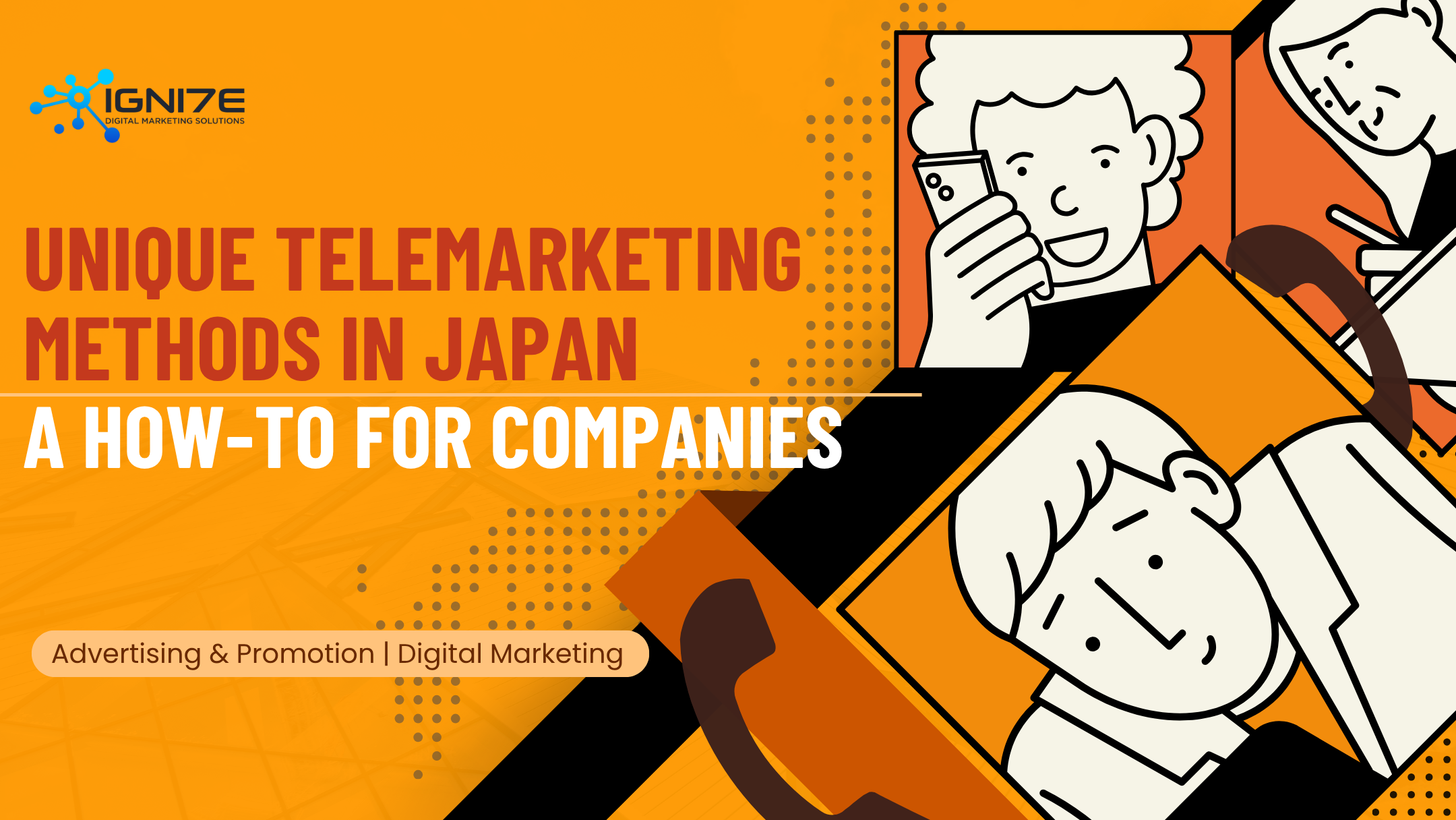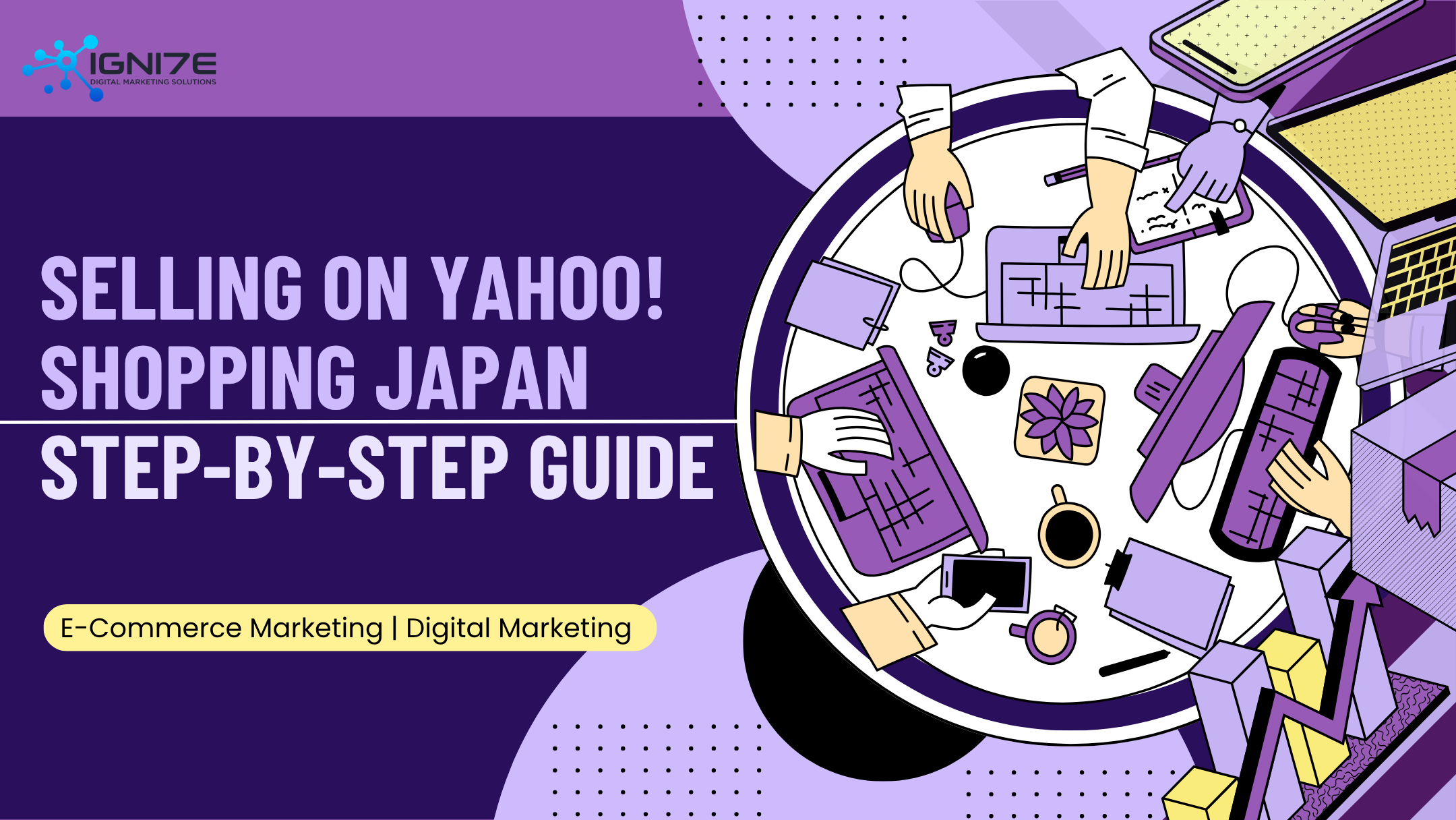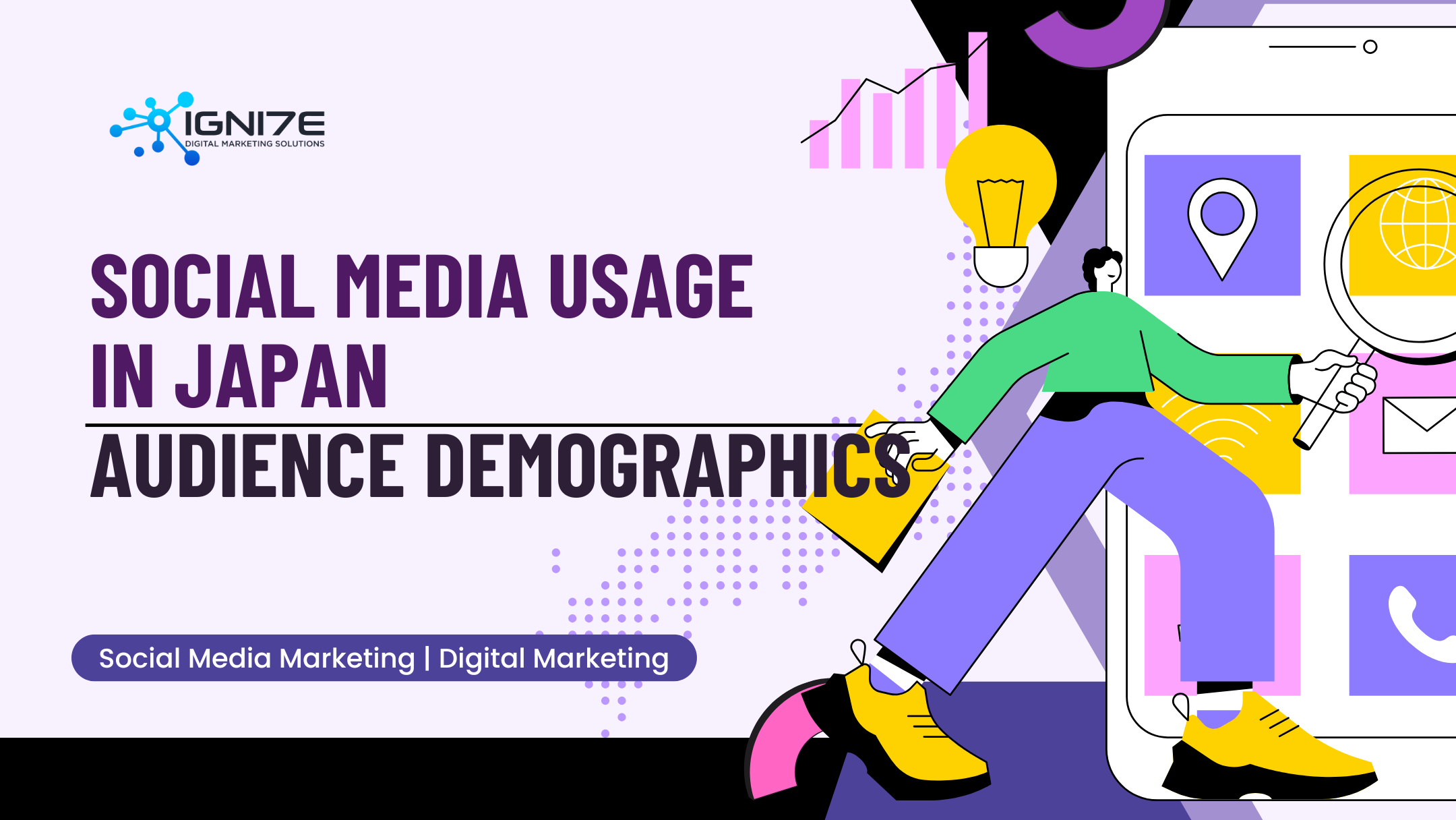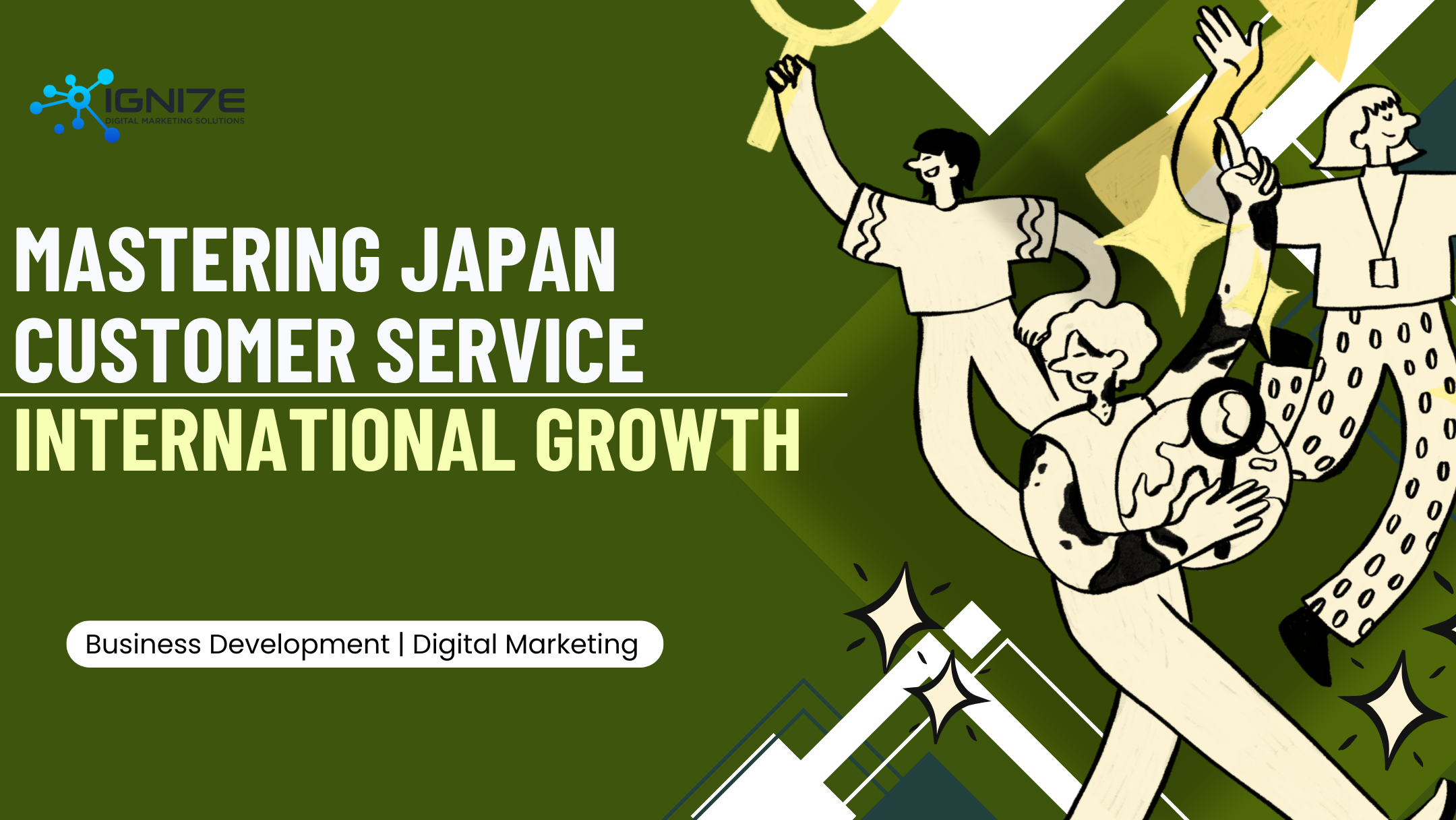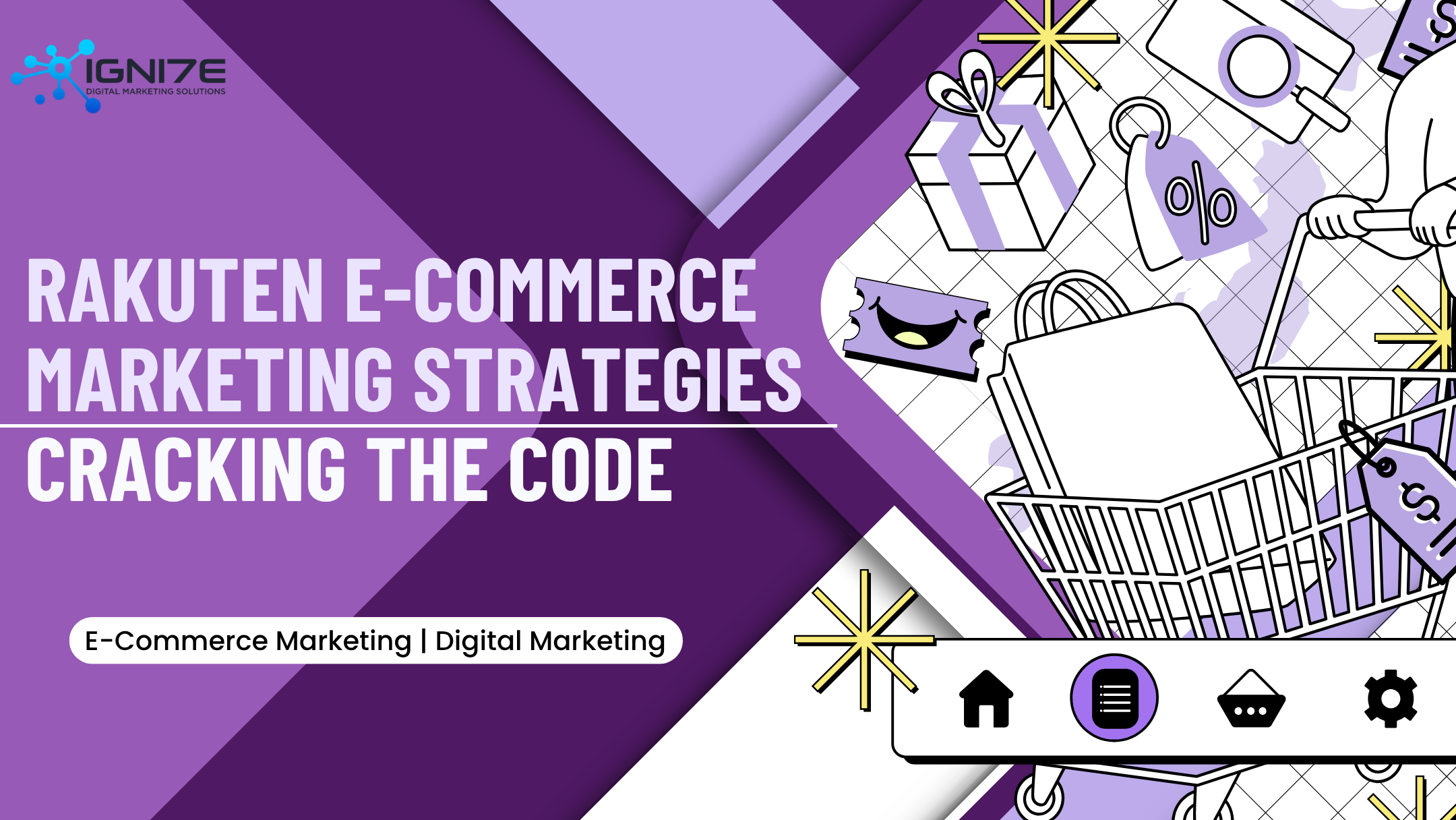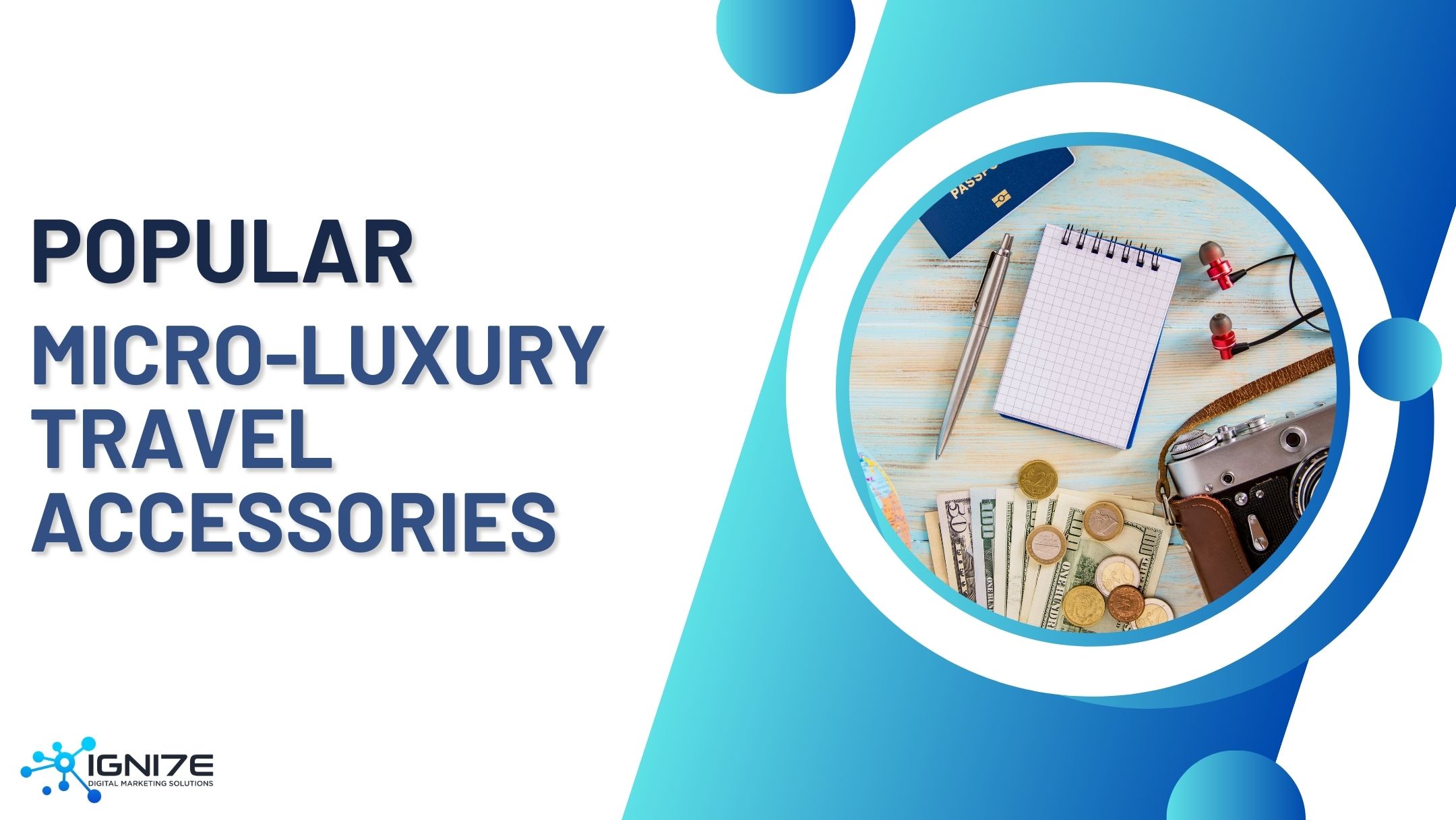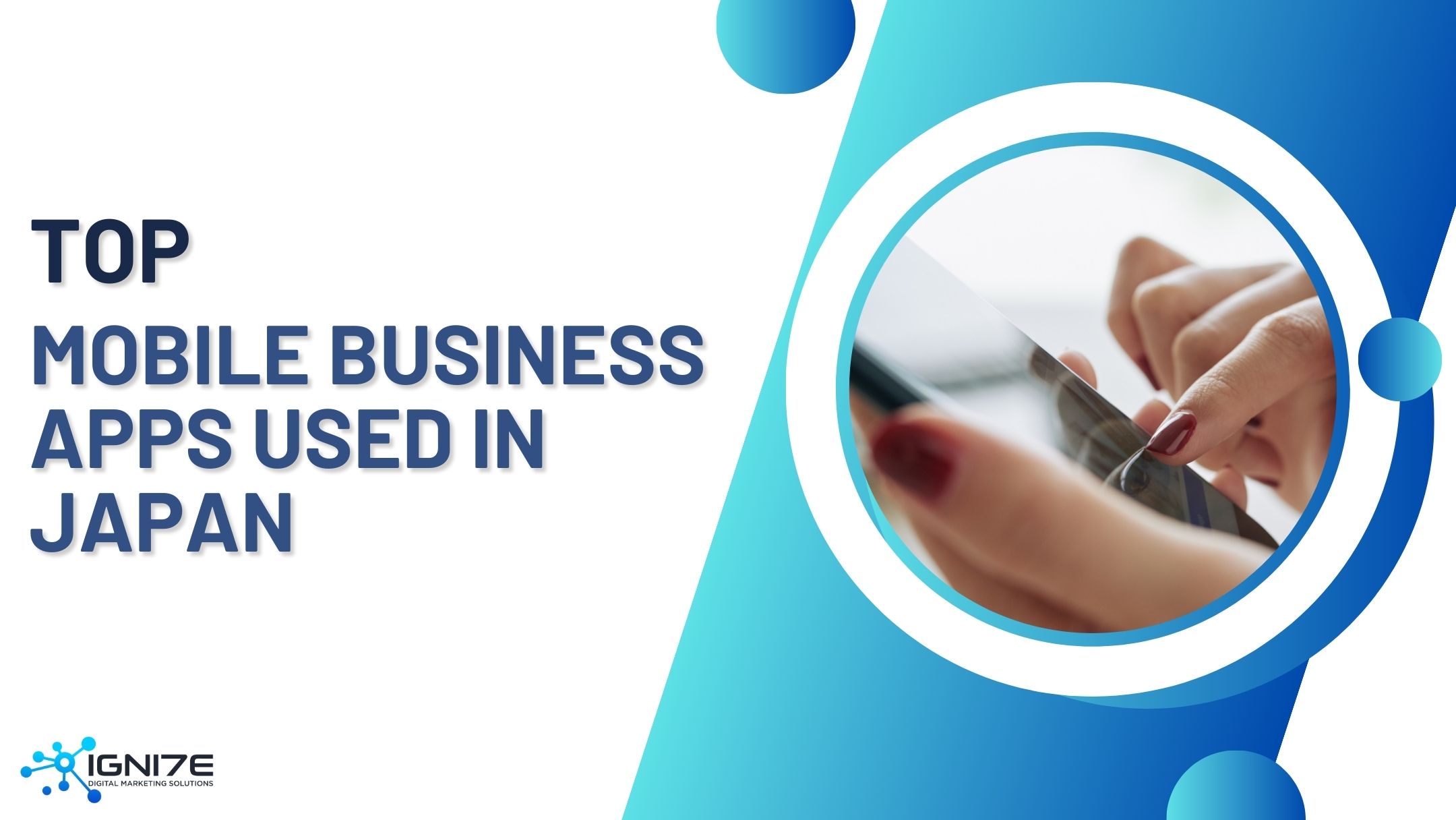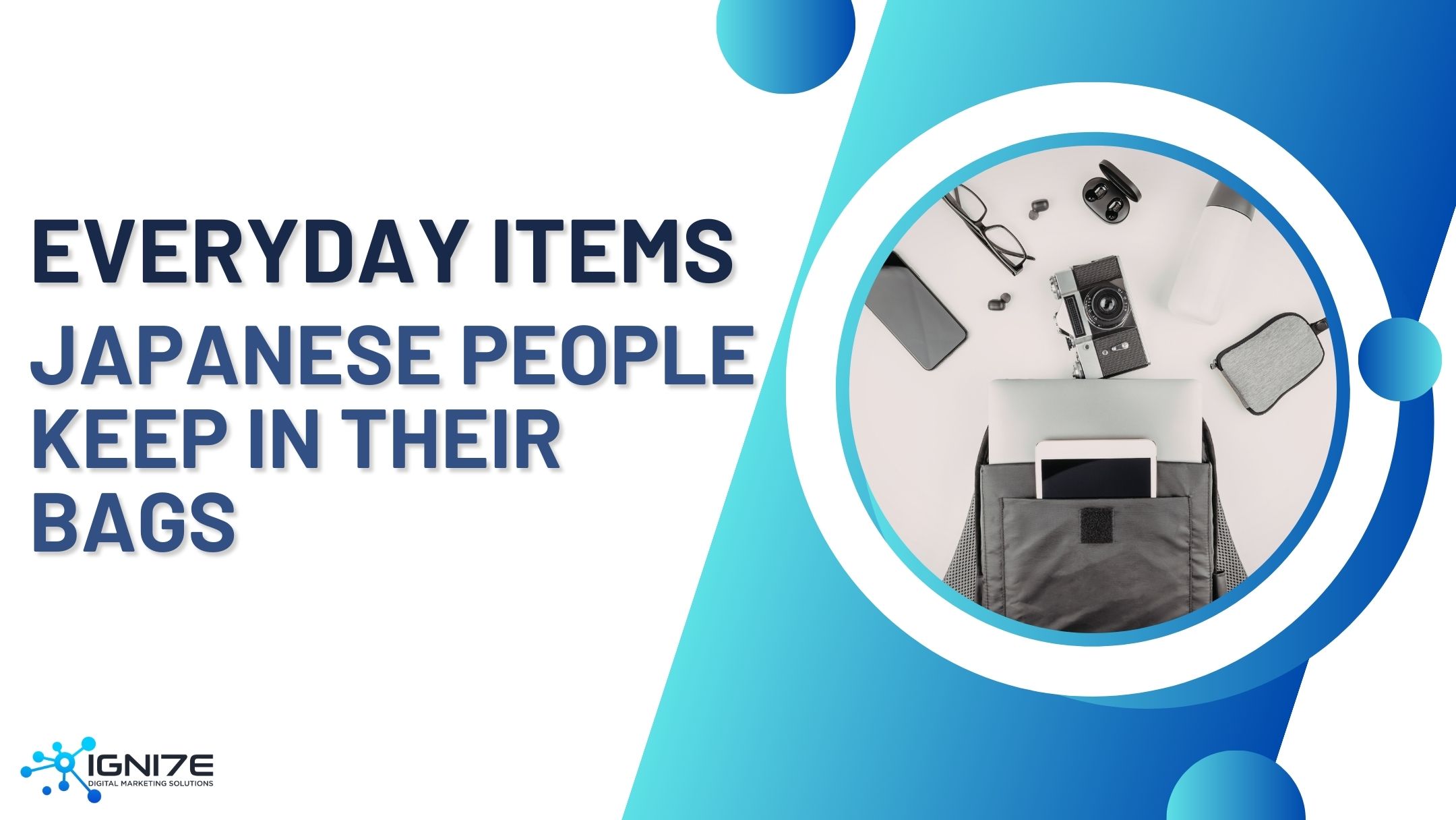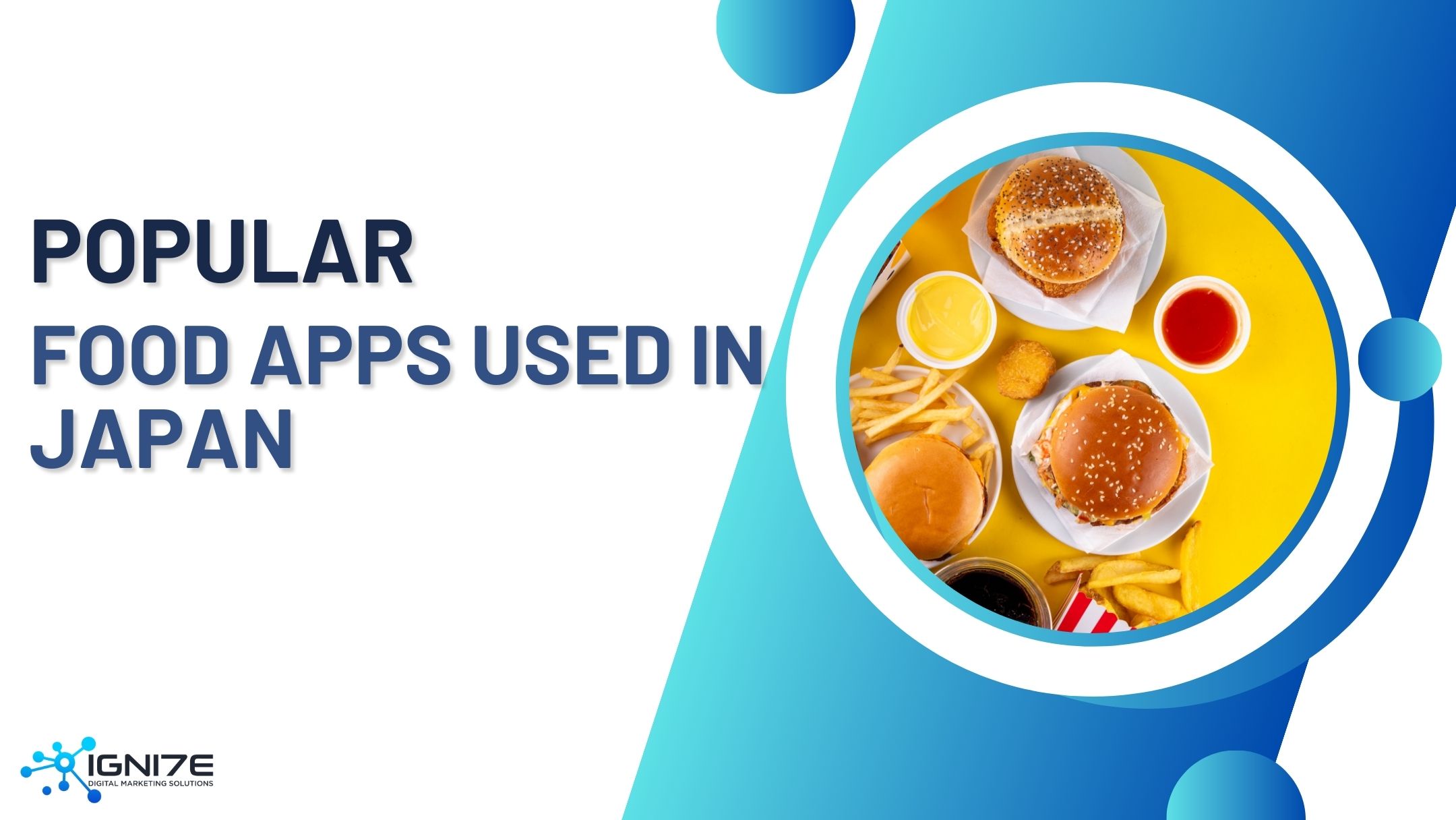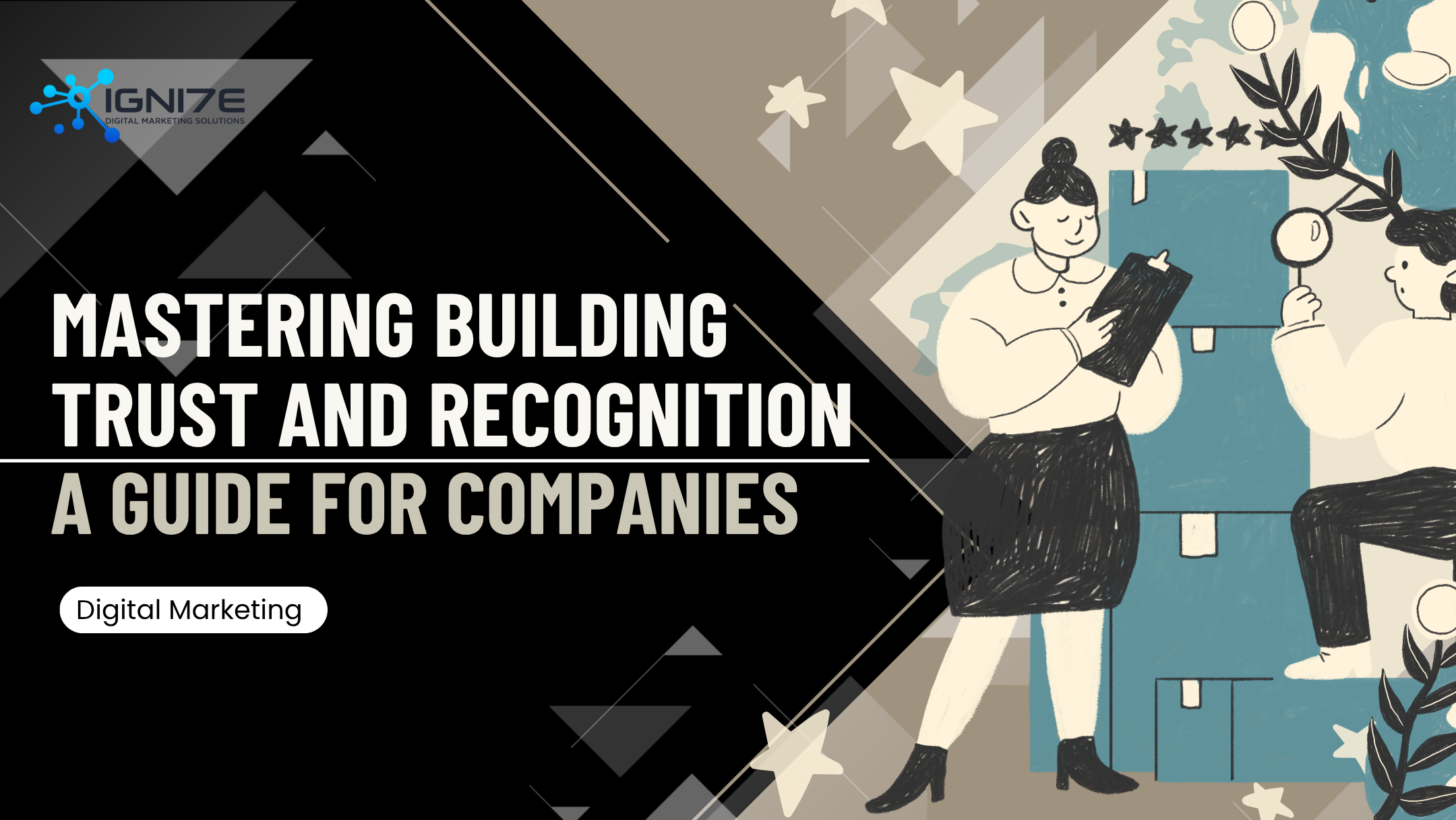Mastering Media Buying in Japan: A Complete Guide to Digital Advertising Success

Entering the Japanese market is a bold and strategic move, but achieving advertising success here requires more than just translating a campaign or following a global playbook. Japan's media landscape is unique, highly localized, and profoundly shaped by culture, consumer behavior, and long-standing industry relationships.
This comprehensive guide was designed to help international businesses navigate the complex world of media buying in Japan—from understanding the key differences between programmatic and direct buying, to mastering platform-specific tactics, and identifying the right local partners. Whether you’re launching your first campaign or scaling an existing presence, this guide equips you with the tools and insights needed to succeed.
Let’s explore how to buy smarter, localize better, and build meaningful, performance-driven campaigns in one of the world’s most sophisticated advertising ecosystems.
What is Media Buying?
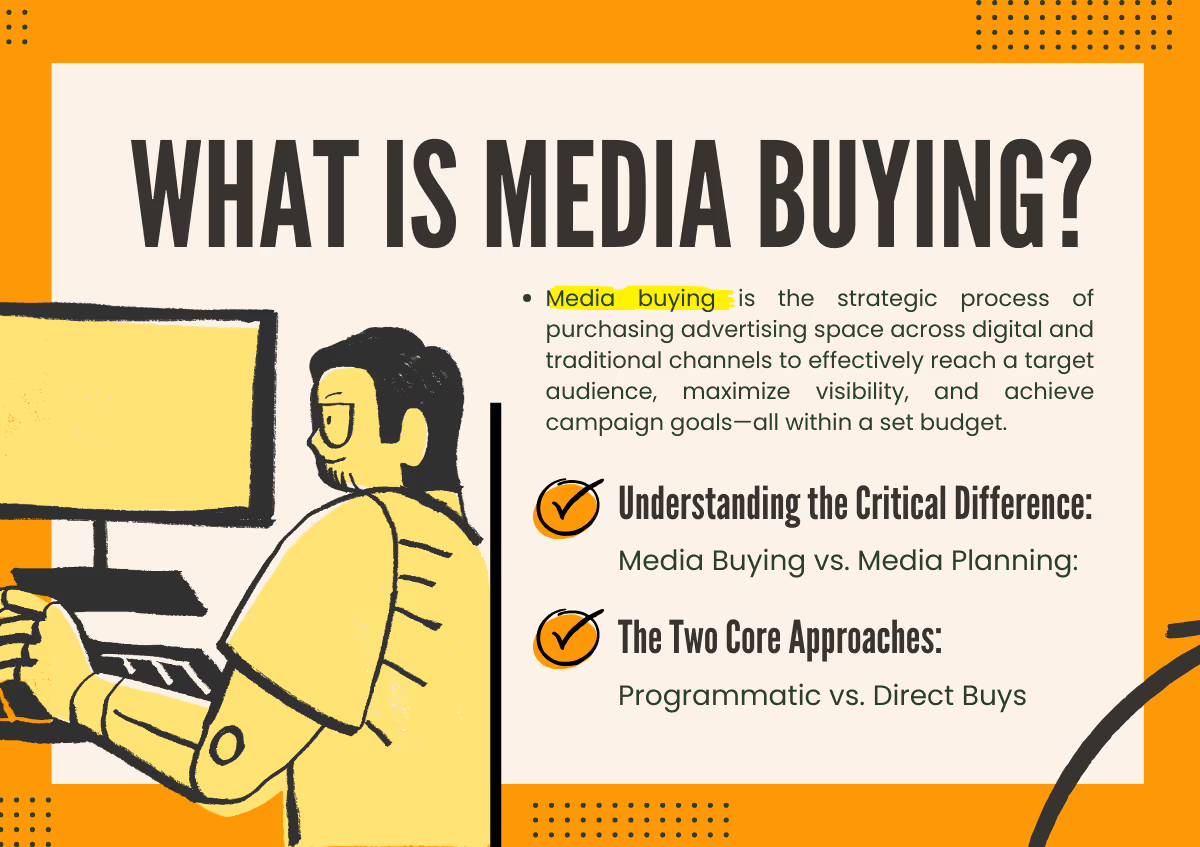
Media buying is the strategic process of purchasing advertising space across digital and traditional channels to effectively reach a target audience, maximize visibility, and achieve campaign goals—all within a set budget. Whether placing a banner on a high-traffic website, running a sponsored post on LINE, or securing a TV slot during prime time, media buyers ensure that every ad appears in the right place, at the right time, and for the right price.
Effective media buying goes beyond simply purchasing space—it’s about understanding consumer behavior, evaluating available inventory, negotiating rates, and continuously optimizing for performance. When executed well, media buying enables brands to amplify their reach, minimize wasted spend, and generate measurable results.
It’s also important to note that related digital marketing tactics like link building operate differently in Japan, where cultural preferences and platform dynamics require a more relationship-driven and localized approach compared to Western markets.
Media Buying vs. Media Planning: Understanding the Critical Difference
Although often used interchangeably, media buying and media planning are two distinct phases in an advertising campaign:
Media Planning is the strategic foundation. It involves researching the target audience, setting campaign objectives, choosing the most effective channels, and allocating the budget accordingly. Media planners analyze market trends, media consumption habits, and competitor activity to recommend the right media mix.
Media Buying is the tactical execution of the plan. It entails negotiating prices with media vendors, purchasing ad placements, and launching campaigns in accordance with the media plan's framework. Media buyers also oversee the delivery of ads, monitor performance, and make adjustments to ensure campaign success.
In short, Media planning defines the "what" and "why"—media buying delivers the "how" and "when." Both roles are essential and must work in tandem to ensure a campaign’s success.
The Two Core Approaches: Programmatic vs. Direct Buys
Modern media buying typically follows one of two core approaches: programmatic or direct. Each offers unique benefits, tools, and use cases—especially within the context of the Japanese market.
Programmatic Media Buying: The Power of AI and Automation
Programmatic media buying utilizes automated technology platforms—commonly referred to as Demand Side Platforms (DSPs)—to purchase ad inventory in real-time. These platforms leverage data, algorithms, and machine learning to serve highly targeted ads to specific audience segments at scale.
Key Benefits:
- Efficiency: Real-time bidding (RTB) enables quick transactions without the need for manual negotiation.
- Precision Targeting: Leverage user data to target audiences by demographics, behavior, device, and more.
- Scalability: Access to a vast inventory across websites, apps, and video platforms with minimal manual effort.
Popular DSPs:
- Google Display & Video 360 (DV360)
- The Trade Desk
- Amazon DSP
Programmatic is particularly effective in Japan’s highly digitized landscape, where mobile usage is high, and consumers expect personalized content. It’s ideal for campaigns focused on performance marketing and reach at scale.
Direct Buys: The Art of Negotiation with Japanese Media
Direct media buying refers to purchasing ad space directly from a specific publisher, media outlet, or platform, without relying on automated systems. The traditional approach relies on human negotiation and relationship-building—elements that hold particular importance in Japanese business culture.
Key Benefits:
- Premium Inventory: Access to exclusive placements on high-traffic sites or media properties.
- Guaranteed Placements: Fixed pricing and confirmed ad positions, often with editorial or creative support.
- Relationship Building: Opportunity to form lasting partnerships with Japanese media reps and publishers.
Japan-Specific Tip:
In Japan, trust and relationships play a vital role in business. A well-established relationship with a publisher can lead to better placements, added-value perks, and smoother campaign execution.
Direct buys are beneficial for brand awareness campaigns, niche targeting, and content integrations with local blogs, news sites, and newsletters.
The Media Buying Process: From Strategy to Execution
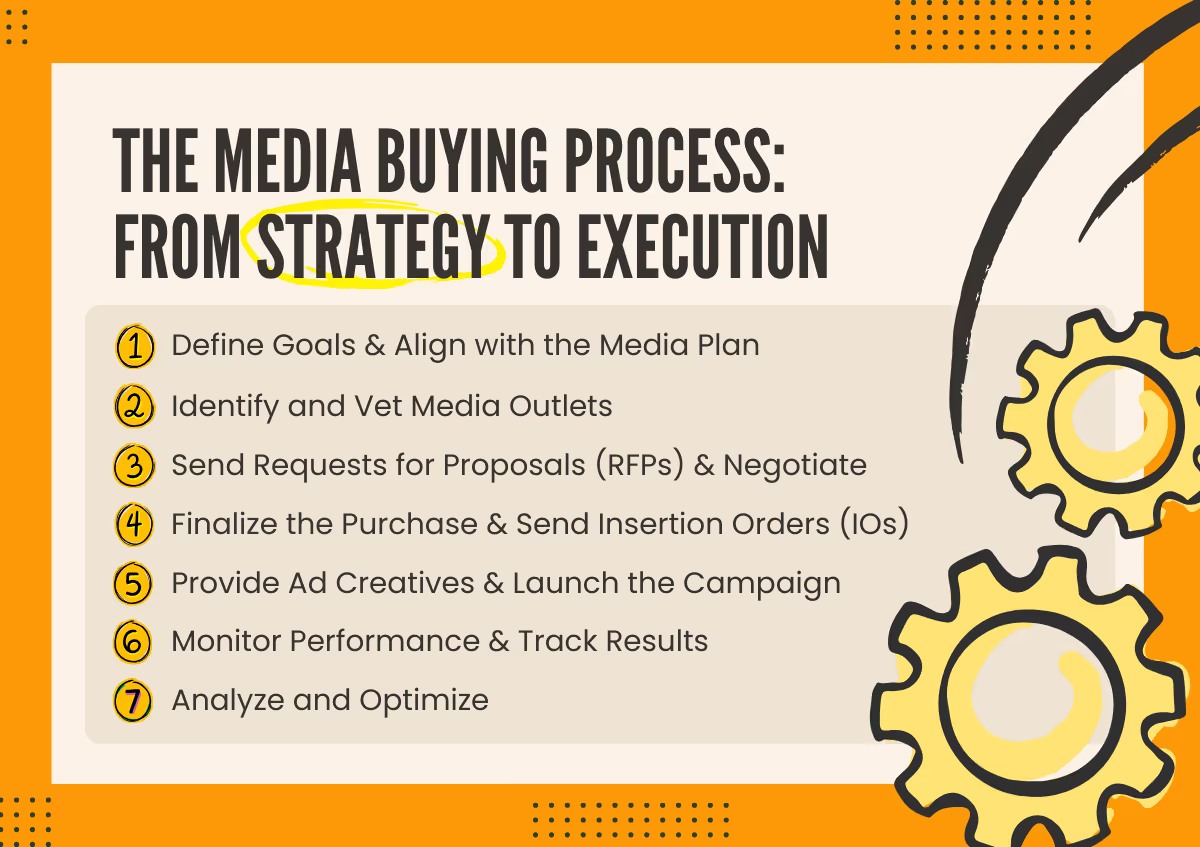
Media buying is not just about purchasing ad space—it’s a precise and strategic process that bridges planning with real-world execution. Whether you're investing in programmatic ads or negotiating direct placements, success relies on a disciplined workflow. In Japan, many brands also choose to outsource media buying to local agencies or specialists who can navigate the cultural and logistical complexities of the market. Here's a step-by-step breakdown of how media buying works in practice.
The 7-Step Media Buying Process
The framework applies across both direct and programmatic approaches. Each step ensures alignment between business goals, media strategy, and campaign performance—an especially critical factor when entering a nuanced market like Japan.
Step 1: Define Goals & Align with the Media Plan
Before any inventory is purchased, the media buyer must align closely with the media planning team. The process involves reviewing:
- Campaign objectives (e.g., brand awareness, lead generation, conversions)
- Key Performance Indicators (KPIs) to track success
- Target audience segments and behavioral insights
- Media budget allocation, including contingencies for optimizations
In Japan’s competitive digital ecosystem, having clearly defined goals ensures that every yen spent drives measurable results.
Step 2: Identify and Vet Media Outlets
With the strategy in place, it’s time to select where your ads will appear. This includes:
- Researching digital and traditional channels: websites, social platforms, streaming services, or even local TV and OOH.
- Evaluating publishers and platforms based on audience relevance, historical performance, inventory quality, and brand safety.
For the Japanese market, consider unique platforms such as LINE or Yahoo! Japan, as well as domestic influencer networks that may not exist or behave differently outside of Japan.
Step 3: Send Requests for Proposals (RFPs) & Negotiate
Once a shortlist is established:
- Send RFPs to each potential media partner, outlining your campaign’s goals, desired formats, target audience, and timelines.
- Compare proposals in terms of CPM, placements, targeting options, and value-added offerings.
- Negotiate aggressively but respectfully—especially important in Japan, where long-term relationships and mutual benefit are highly valued.
In programmatic buying, the process may also involve testing various DSPs to evaluate reach and performance benchmarks.
Step 4: Finalize the Purchase & Send Insertion Orders (IOs)
After selecting the best-fit media partners:
- Confirm the terms of the media buy, including budget, duration, placements, and deliverables.
- Send Insertion Orders (IOs) or sign contracts that formalize the agreement.
- Ensure all legal, payment, and compliance steps are clearly documented.
In Japan, attention to detail in documentation and adherence to deadlines are significant for maintaining credibility and trust with publishers.
Step 5: Provide Ad Creatives & Launch the Campaign
Once deals are secured, coordinate with the creative team to deliver assets:
- Ad creatives must match each platform’s specifications, including file format, character limits, and tone (which may require localization for Japan).
- Ensure smooth delivery to publishers or DSPs before launch.
In Japan, creatives that reflect cultural nuance and local sensibilities often outperform global assets.
Step 6: Monitor Performance & Track Results
After launch, media buyers must:
- Track performance in real time through analytics dashboards and publisher reports.
- Watch KPIs such as CTR, viewability, engagement, and conversions.
- For underperforming placements, consider negotiating makegoods or reallocating the budget to more effective channels.
Japanese media platforms may report information in different formats or intervals; understanding these nuances helps prevent data gaps.
Step 7: Analyze and Optimize
Finally, use collected data to:
- Identify which placements, creatives, and platforms performed best.
- Refine audience targeting, messaging, or bidding strategies based on performance insights to optimize results.
- Refine your strategy for future campaigns by applying lessons learned.
Ongoing optimization is key, especially in Japan, where consumer behavior can shift rapidly in response to seasonal trends, product cycles, or cultural events.
Strategic Media Buying in the Japanese Market
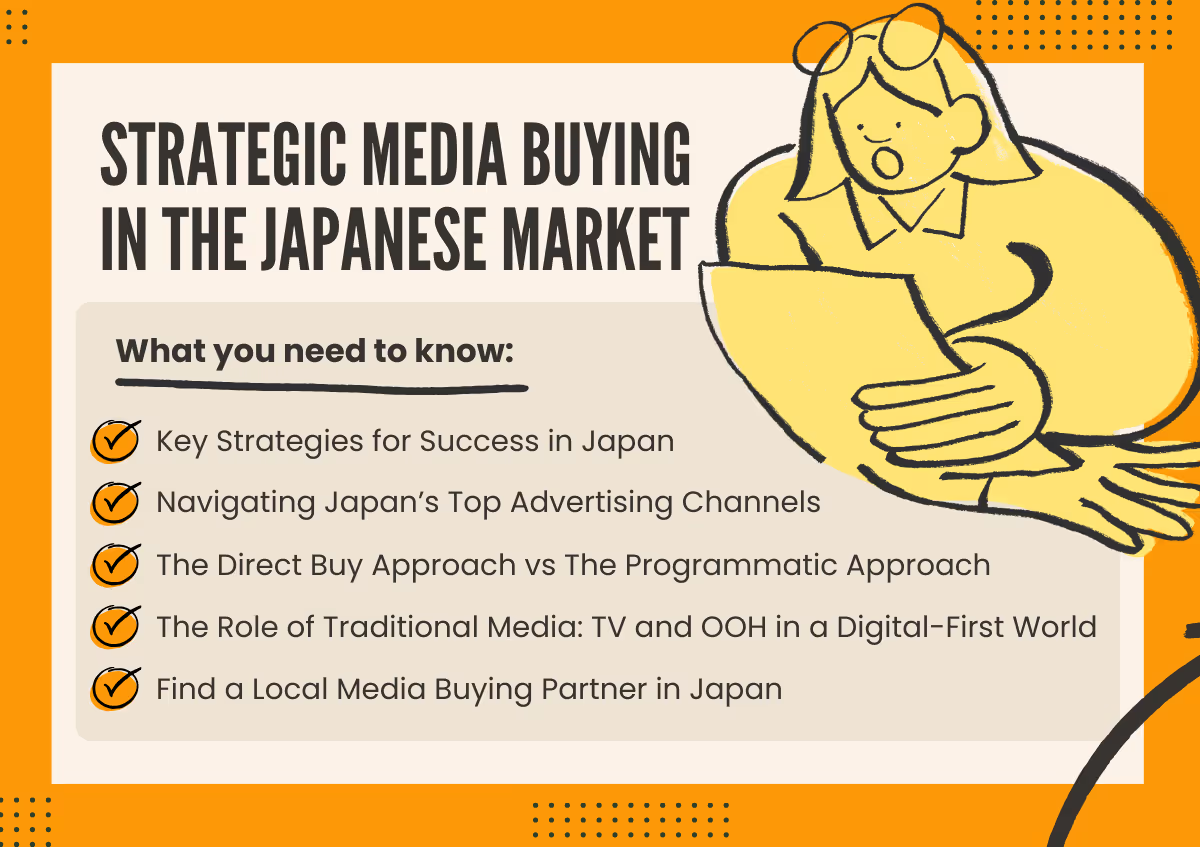
Entering the Japanese market with a media buying strategy requires more than simply translating global campaigns for Japanese audiences; it also necessitates adapting them to the local context. Japan has a unique media landscape, distinct consumer behaviors, and cultural expectations that must be thoughtfully considered. Below, we break down how to adapt your approach for success.
Key Strategies for Success in Japan
Succeeding in Japan’s advertising ecosystem means localizing both what you say and how you say it.
- Cultural Nuances in Ad Creative and Messaging
Japanese consumers respond best to ads that reflect harmony, subtlety, and authenticity. Humor, emotion, and storytelling are key levers—flashy, hard-sell tactics often fall flat.
- Use localized copywriting, not direct translation. Honorific language and seasonal references can significantly improve ad relevance.
- Avoid overly aggressive CTA language. Instead, emphasize trust, quality, and craftsmanship—values that deeply resonate with Japanese audiences.
- Visuals should reflect Japanese aesthetics (minimalist, clean, culturally attuned).
- Understand Consumer Behavior and Online Habits
- Peak online usage in Japan typically occurs during commuting hours (7–9 AM and 6–9 PM) and late at night (10 PM–1 AM).
- Mobile usage dominates—over 90% of digital ad interactions happen on smartphones, so all creatives and placements must be optimized for mobile.
- Japanese users are research-heavy. Reviews, social proof, and comparison shopping are integral to purchase decisions.
- Adopt a Mobile-First, Detail-Oriented Mindset
From banner sizes to load speed and button placement, a mobile-first approach is non-negotiable. UX expectations are high—clean layout, fast performance, and a clear path to action are mandatory to compete effectively.
Navigating Japan’s Top Advertising Channels
Japan’s advertising environment blends globally known platforms with domestic giants. Here’s a look at where to focus your attention:
- LINE Ads
Japan’s most widely used messaging app, LINE, is a high-performance channel for a range of content, including sponsored messages, in-feed display ads, and mini-app integrations.
- Best for: Mass reach, loyalty programs, native content.
- Buying method: Programmatic via LINE Ads Platform or via agency partners.
- YouTube & Video Platforms
Video is a dominant content format, and YouTube is one of the top platforms in Japan for all age demographics.
- Best for: Brand awareness, product launches, influencer partnerships.
- Buying method: Google Ads (programmatic) or direct buys via MCNs or agencies.
- Yahoo! Japan & Google (SEM)
Unlike many other markets, Yahoo! Japan maintains a significant share of the search engine market. Effective SEM in Japan requires advertising across both engines.
- Best for: High-intent users.
- Buying method: Separate dashboards for Google Ads and Yahoo! Ads.
- Instagram, X, TikTok, and Facebook
Popular for social engagement, especially among younger audiences. X has a powerful influence in Japan.
- Best for: Engagement, trends, influencer tie-ins.
- Buying method: Self-serve platforms or agency support for localized execution.
- OOH and Transit Ads
Urban Japan, particularly in Tokyo and Osaka, remains heavily reliant on high-impact outdoor advertising, including digital signage in train stations and other public spaces.
- Best suited for: Mass exposure and prestige campaigns.
- Buying method: Negotiated directly with media owners or via specialized local agencies.
The Direct Buy Approach: Negotiating for Analogue-Style Placements
Not all valuable media is bought through platforms. In Japan, direct relationships with media owners and content creators are often more effective, especially for niche targeting or native integration.
Website & Niche Blog Placements (Banner Buys)
- Process: Identify high-traffic, relevant blogs or websites → Locate the “Media Kit” or “Advertise With Us” page → Initiate contact via email to request audience data, CPM rates, or fixed-fee options.
- Why it works: These placements often carry more credibility in Japan due to their established, loyal reader bases.
Email Newsletter Sponsorships
- Process: Research newsletters in your vertical (e.g., tech, parenting, finance) → Ask for their media kit → Negotiate placements such as top banner spots, text ads, or sponsored sends.
- Tip: Japanese newsletter readers expect content-driven ads—use soft sells with value-based messaging.
Influencer & Content Creator Partnerships
- Process: Find relevant micro or macro influencers on platforms like Instagram, YouTube, or TikTok → Reach out directly via DM or listed contact info → Discuss deliverables, usage rights, and pricing.
- Note: Japanese influencers often prefer more structured partnerships and contracts. Expect to build trust before negotiating.
The Programmatic Approach: Using Self-Serve Ad Platforms
Japan’s digital landscape continues to mature rapidly, and self-serve platforms now account for the majority of transactional ad spending. For advertisers seeking scale, precision, and speed, programmatic media buying offers unparalleled efficiency; however, it must be localized to meet the unique needs of Japanese consumer behavior and platform preferences.
Social Media Platforms (Meta, X, TikTok, LINE)
Influencer marketing and social media advertising in Japan is surging, with social ad spend surpassing 1.1 trillion yen in 2024, up 13.1% YoY. Meta (Facebook and Instagram), X (formerly Twitter), TikTok, and LINE are the four core players:
- Meta: Facebook remains strong among 30s–50s demographics, while Instagram dominates the lifestyle, fashion, and beauty verticals. Japanese creatives emphasize subtlety, elegance, and cultural references over bold CTA-heavy formats.
- X (Twitter): With high daily usage, especially during major events and news cycles, X is often used for real-time engagement and trending hashtag campaigns.
- TikTok: Vertical video growth has skyrocketed, with brands increasingly leaning into influencer-driven and User-Generated content (UGC) styles. TikTok’s algorithm rewards hyper-local, culturally relevant material, making it an ideal platform for trend-based campaigns.
- LINE: As Japan’s dominant messaging platform, LINE offers native ad units, display banners, and rich messaging ads. It’s particularly effective for campaigns aimed at working adults and families.
Search & Display Networks (Google & Yahoo! Japan)
Search engine marketing (SEM) continues to be the largest internet ad category in Japan, comprising 40.3% of total spend:
- Google Ads: Internationally familiar, Google offers robust targeting and reporting, with high mobile search traffic and powerful YouTube integrations.
- Yahoo! Japan Ads: Still essential, especially for older demographics and Japanese-language queries. Yahoo! Japan’s native ad units, display banners, and search ads allow for contextually relevant placements in Japan's top domestic portal.
Localization is critical; ad copy, landing pages, and even search terms must be adapted to Japanese language nuances, polite formality, and cultural expectations.
Connected TV (CTV) & Video Platforms
Video advertising grew by 23% YoY in 2024, reaching 843.9 billion yen, and overtook display for the first time—a clear sign of shifting consumer engagement in Japan:
- YouTube remains dominant, with both instream and outstream ads contributing almost equally to growth. Many Japanese users consume YouTube via connected TVs in the evenings, prime time for brand storytelling.
- ABEMA, TVer, and Hulu Japan are popular streaming platforms for both catch-up TV and original content, providing new CTV ad inventory.
- Short-form vertical video formats (e.g., YouTube Shorts, TikTok) now demand a mobile-first, swipe-friendly creative approach, optimized for sound-off consumption and fast engagement.
Localized narratives, subtle emotional cues, and professional polish in storytelling remain important for resonating with Japanese audiences.
The Role of Traditional Media: TV and OOH in a Digital-First World
Even in a digitized landscape, TV and out-of-home (OOH) media remain deeply entrenched in Japanese consumer culture. In fact, media plans in Japan often begin with TV, with digital augmenting rather than replacing traditional channels.
- Television: TV advertising retains significant influence in Japan due to its cultural prestige and broad reach. Well-produced commercials—like the iconic Calbee “Jagarico” spots—create lasting emotional resonance. Strategic TV buys are still considered key to mass-market brand building and often include sponsorships, prime-time slots, or integration with variety shows.
- Out-of-Home (OOH): In densely populated cities like Tokyo and Osaka, digital billboards, train station ads, and branded signage deliver high-impact impressions. Shibuya’s scramble crossing and Shinjuku’s LED screens are valuable for launches or major brand moments.
- Print: Newspaper and magazine ads continue to reach older and professional demographics, particularly in the finance, real estate, and luxury goods sectors. While circulation is declining, credibility and targeted placements make print a vital supplement.
- Radio: Often overlooked, radio remains effective in regional cities and can be surprisingly influential due to local host loyalty and low cost. It is also an excellent alternative for brands with lower budgets but strong creative hooks.
Why You Need a Local Media Buying Partner in Japan
Attempting media buying in Japan from overseas is a costly mistake for most foreign companies. Localization is not optional—it is foundational.
Payment and Trust Barriers
Many Japanese media owners—especially smaller ones or legacy platforms—prefer to transact with domestic partners due to issues of:
- Payment method compatibility (e.g., bank transfers vs. credit card billing)
- Legal and contractual confidence (e.g., Japanese-language contracts, installment plans)
- Credibility concerns (foreign buyers are seen as risky without local representation)
By working with a local agency or affiliate, foreign companies gain instant legitimacy and access, allowing smoother negotiations and inclusion in premium inventory lists.
Language and Negotiation Dynamics
Negotiating ad placements in Japan is almost always conducted in Japanese, and often involves nuanced conversations around:
- Placement location
- Ad content and brand fit
- Timing and exclusivity
- Pricing structure (CPM vs. flat fee vs. hybrid)
Without a fluent, culturally aware intermediary, international brands risk miscommunication, suboptimal pricing, or outright rejection. A local partner can also pre-negotiate rates and bundle placements—something not possible via self-serve platforms.
Local Strategy Wins Over International Tactics
Japan’s advertising culture values long-term relationships, storytelling, and relevance over raw performance metrics. Local partners understand these values and can tailor their strategy accordingly. Whether it’s crafting campaign timelines around seasonal behaviors or adapting creatives for cultural cues, their insight can dramatically improve ROI.
Bottom line is, don’t try to apply a Western media buying playbook directly to Japan. The best outcomes come from strategic adaptation, cultural fluency, and collaboration with local experts who understand how to navigate the landscape from both a media and consumer standpoint.
Measuring Success and Finding the Right Partner
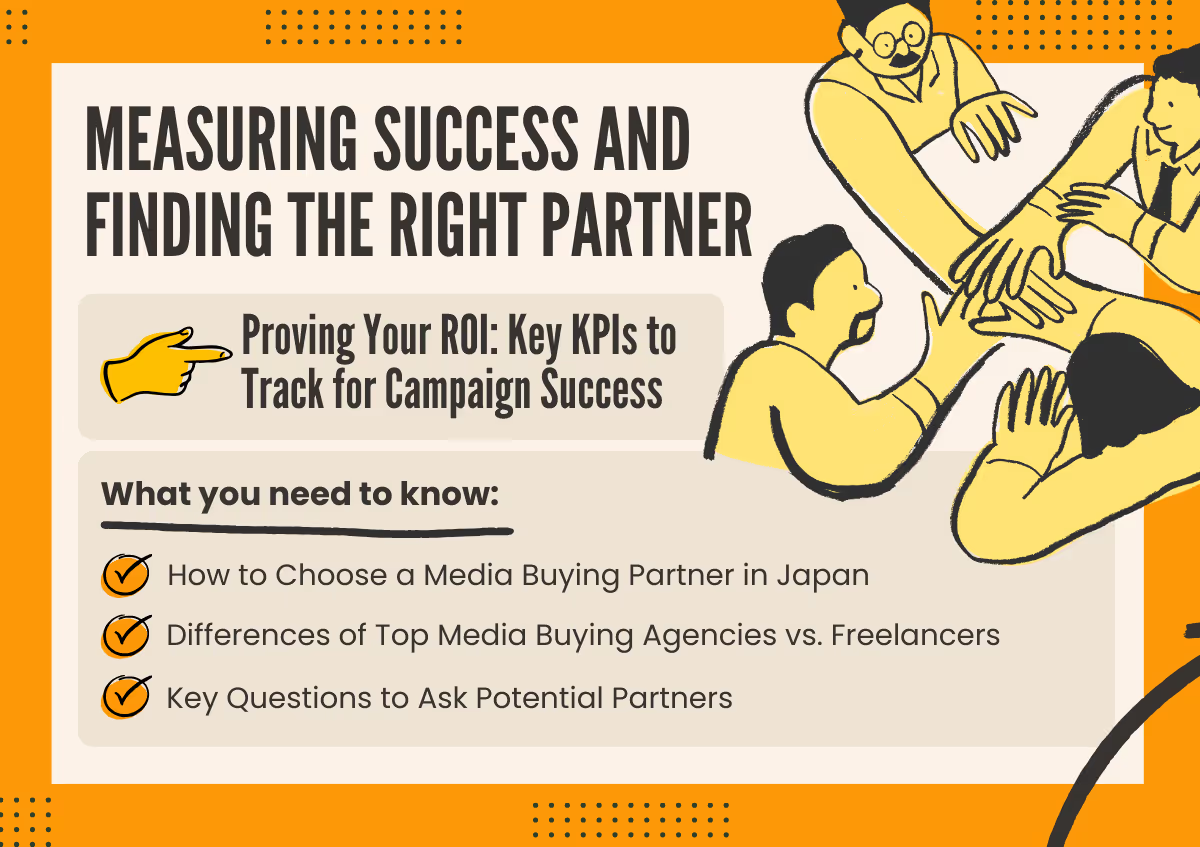
Understanding the performance of your advertising efforts and choosing the right collaborators are essential for sustained success in Japan’s media landscape. This section outlines the most relevant KPIs for digital campaigns and offers a practical framework for selecting a media buying partner that aligns with your goals.
Proving Your ROI: Key KPIs to Track for Campaign Success
In the performance-driven world of Japanese advertising, data is your compass. Measuring campaign effectiveness across each stage of the funnel helps validate your strategy and inform future optimizations.
Top-of-Funnel Metrics
Focus on visibility and reach:
- Impressions: The Total number of times your ad is displayed.
- Reach: Unique users who have seen your ad.
- CPM (Cost Per Mille): How much you’re spending for every 1,000 impressions—ideal for benchmarking brand awareness campaigns.
Mid-Funnel Metrics
Gauge engagement and user interest:
- CTR (Click-Through Rate): Percentage of users who clicked your ad—an indicator of creative effectiveness and message resonance.
- CPC (Cost Per Click): Efficiency of your ad spend based on user engagement.
Bottom-of-Funnel Metrics
Track performance tied to business goals:
- Conversion Rate (CVR): The share of users completing a desired action (purchase, signup, etc.).
- CPA (Cost Per Acquisition): Your cost for securing a new customer.
- ROAS (Return on Ad Spend): Revenue generated per yen spent on ads—essential for profitability analysis.
Supporting Metrics
- Website Traffic & Session Duration: Useful for evaluating content appeal and user behavior.
- Customer Lifetime Value (CLTV): Helps you understand long-term value versus acquisition cost.
- Customer Retention Rate: Especially valuable for subscription-based or e-commerce businesses that rely on repeat purchases.
A robust KPI framework not only justifies your marketing investment, but it also empowers your team to course-correct and scale what works.
How to Choose a Media Buying Partner in Japan
Choosing the right partner can be the difference between a misfire and a breakthrough. Whether you’re a global brand entering Japan or a startup scaling locally, align your partner selection with your goals, budget, and level of in-house expertise.
What to Look For:
- Local Market Experience: Partners familiar with Japan’s platforms (LINE, Yahoo! Japan, etc.) and consumer behavior are better equipped to localize and optimize their offerings for the local market.
- Track Record: Ask for case studies relevant to your industry or goals.
- Certifications: Look for official certifications from platforms like Google Ads, Meta, or TikTok.
- Cultural Fit: Choose a partner who understands both your brand voice and Japan’s unique business etiquette and communication norms.
Traditional agencies, such as Dentsu and Hakuhodo, bring deep cultural insight and institutional experience, but may require longer lead times and a collaborative, long-term commitment.
Evaluating Top Media Buying Agencies vs. Freelancers
Both agencies and freelancers can drive results if matched to the right kind of project. Here’s a side-by-side comparison to help you decide:
When to Choose What:
- Choose an Agency when your campaign requires cross-channel execution, creative production, media strategy, and reporting.
- Choose a Freelancer when you need quick execution, limited budget deployment, or platform-specific optimization (e.g., Google Ads or LINE campaigns).
Key Questions to Ask Potential Partners
Before committing to any media buying relationship, ask the right questions to vet their fit for your needs:
Strategy & Execution
- What’s your approach to localization for Japanese audiences?
- How do you handle campaign planning, execution, and optimization?
Experience & Track Record
- Can you share case studies or results from similar campaigns?
- Which industries have you worked with in Japan?
Capabilities & Specialization
- Which platforms do you specialize in (e.g., Google, Meta, LINE, Yahoo! Japan)?
- Do you provide creative services, data analysis, or just media placement?
Communication & Process
- What’s your typical turnaround time for campaign setup and changes?
- How often do you report on performance and insights?
Tools & Transparency
- Do you provide real-time dashboards or reports?
- How do you track KPIs and attribute conversions?
Budget & Value
- What is your fee structure—flat rate, percentage, or retainer?
- How do you ensure ROI and optimize spend?
Do not just look for a vendor—look for a partner. The right media buying partner in Japan will bring local insights, transparency, and a commitment to long-term growth, not just short-term performance.
Frequently Asked Questions About Media Buying
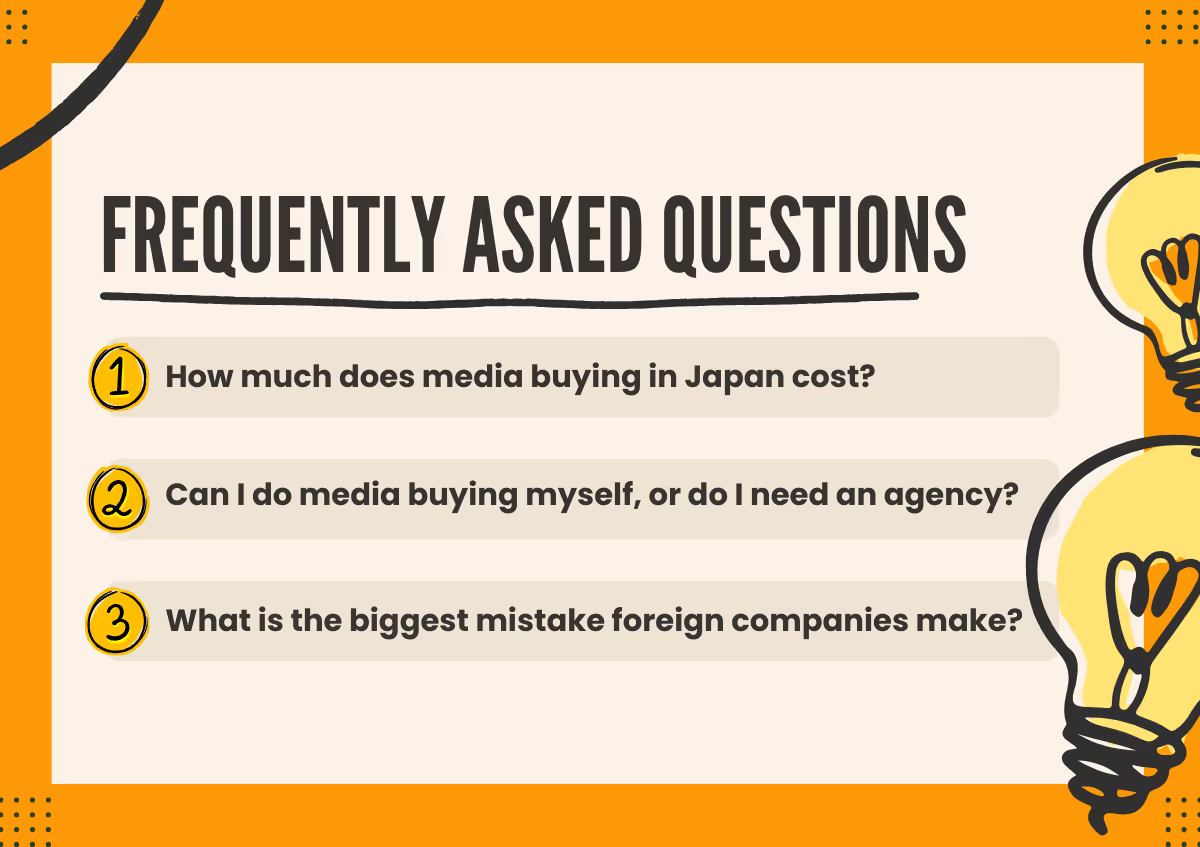
Let’s take a look at some of the frequently asked questions from international companies seeking to master media buying in Japan:
How much does media buying in Japan cost?
A: There’s no single answer—costs vary widely depending on the platform, format, targeting, and scope. For example, a banner ad on a niche blog may cost only tens of thousands of yen per month, while a homepage takeover on Yahoo! Japan could run into the millions.
We recommend starting with a test budget you’re comfortable with (e.g., ¥500,000–¥1,000,000) and scaling based on performance data.
Can I do media buying myself, or do I need an agency?
A: Yes, you can run campaigns yourself using self-serve platforms like Meta Ads, Google Ads, or LINE Ads. However, success in Japan requires more than just running ads—it demands a deep understanding of the local market, cultural fluency, and effective negotiation with media partners.
Working with an agency like IGNITE helps you avoid costly mistakes, streamline execution, and maximize your return on investment, especially when making direct buys or launching in Japan for the first time.
What is the biggest mistake foreign companies make?
A: The most common (and damaging) mistake is failing to localize. Poorly translated ad copy, irrelevant visuals, and global messaging that doesn’t resonate with Japanese consumers almost always lead to underperformance.
Japan rewards subtlety, nuance, and trust. A one-size-fits-all global strategy is unlikely to be effective. Localize not just your content, but also your approach.
Conclusion: Master Media Buying and Take the Lead in Japan’s Digital Landscape
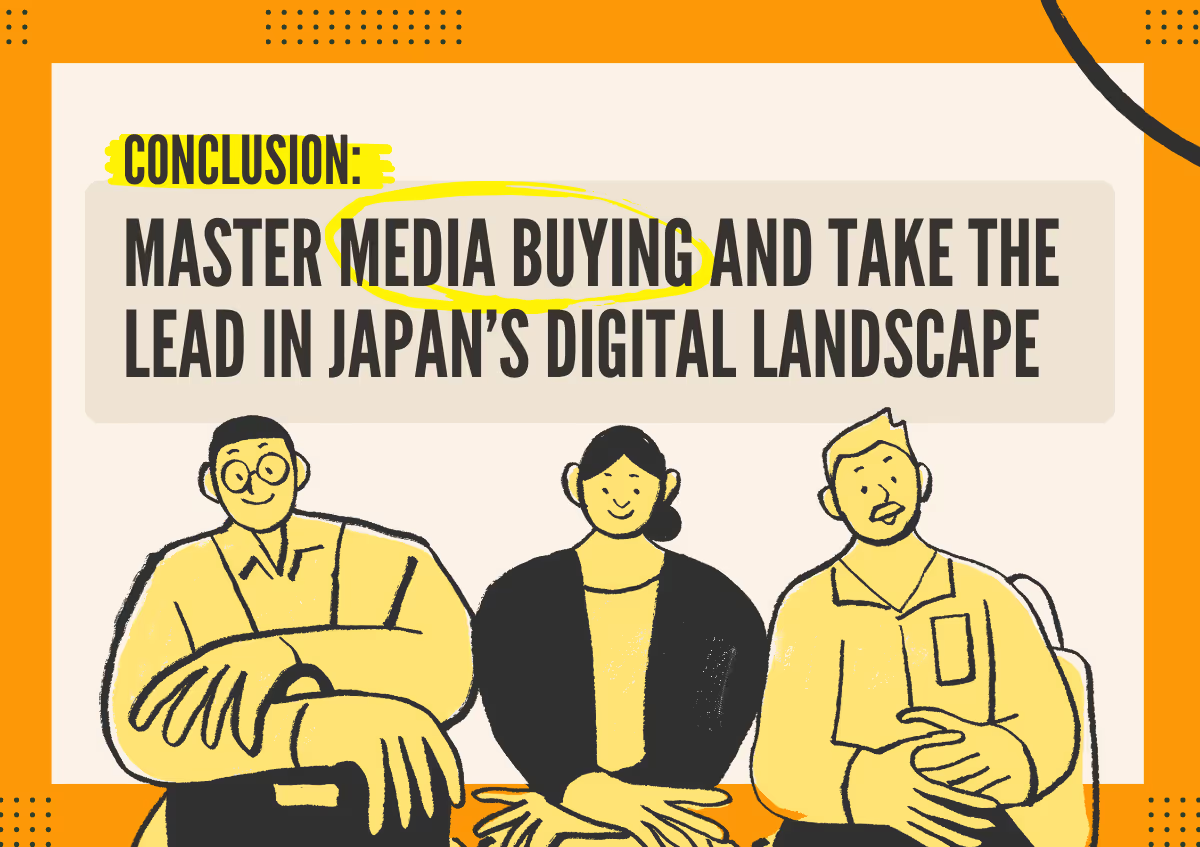
Succeeding in Japan’s media landscape requires a careful balance of art and science. Beyond technical skills, effective media buying here demands a deep understanding of cultural nuances, a well-localized strategy, and strong partnerships built on trust. Whether you are launching your first campaign or refining an existing one, embracing these elements will set you apart and create a foundation for success.
The Japanese market is unique, blending rich traditions with cutting-edge innovation. Navigating it successfully means tailoring your approach—not simply applying global tactics but adapting them with respect for local consumer behavior and media ecosystems. Working with local experts and measuring the right KPIs ensures your campaigns stay relevant and deliver lasting impact.
By following the principles outlined in this guide, you now have a clear roadmap to build a powerful, profitable advertising presence in Japan. With the right mindset, strategy, and partners, navigating this complex market becomes not only achievable but also rewarding, opening doors to sustained growth and brand loyalty.
Key Takeaways: Aligning with Japan’s Unique Media Culture
Japan’s advertising market offers immense opportunities for brands willing to embrace its unique blend of tradition and innovation. Success here depends on strategic adaptation, cultural fluency, and a disciplined, localized approach. Below are essential points to guide your journey:
- Localization is everything: Success in Japan goes far beyond language. It requires a deep understanding of Japanese culture, refined messaging, and creative approaches that align with Japanese consumer values and expectations.
- Balance direct and programmatic: The most effective media buying strategies in Japan blend the precision and scale of programmatic platforms with the relationship-driven trust and premium access of direct buys.
- Mobile is king: With over 90% of digital ad interactions happening on smartphones, a mobile-first mindset is essential for both creative development and platform selection.
- Cultural nuance drives performance: Japan rewards subtlety, respect, and storytelling. Ads that reflect these values consistently outperform global one-size-fits-all approaches.
- Partnering locally builds trust: Working with a Japanese agency or affiliate helps overcome language, legal, and payment barriers, while giving you instant credibility with media partners.
- Measure and optimize: Data is your compass. Track KPIs across the funnel—CPM and reach for awareness, CTR and CPC for engagement, and CPA and ROAS for conversions. Use these insights to refine and improve continuously.
- Choose the right support model: Agencies offer full-service capabilities and scalability; freelancers provide agility and focused expertise. Match your partner to your campaign goals and internal capacity.
By integrating these principles and partnering with local professionals, your brand will be well-positioned to enter, thrive, and grow sustainably in Japan’s dynamic media environment.
Ready to Dominate the Japanese Market? Partner with IGNITE.

Navigating Japan’s media ecosystem isn’t easy, but you don’t have to go it alone.
At IGNITE, we’re more than just a digital agency—we’re your local marketing team in Japan. With multilingual specialists, deep platform expertise, and boots on the ground in Osaka, we help international brands cross language and cultural barriers to build data-driven campaigns that deliver real results.
From negotiating premium direct buys with Japanese publishers to running scalable, high-performance programmatic ads on LINE, Yahoo! Japan, Google, and TikTok—we’ve done it all.
Let’s IGNITE your growth in Japan.
Contact us today for a free consultation and take the first step toward media buying success in one of the world’s most exciting markets.



